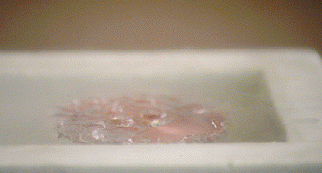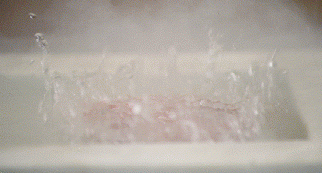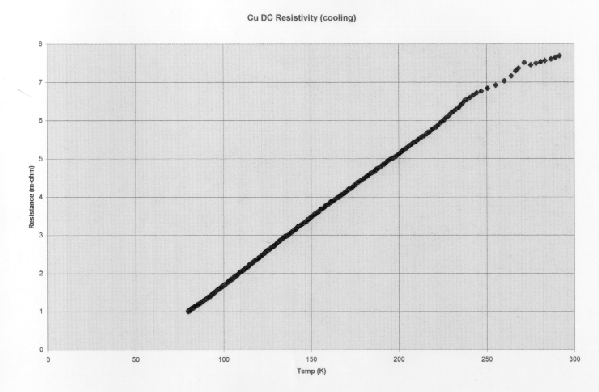

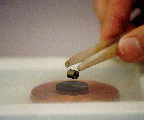

The results above are typical of the copper sample in the demostration. The data was taken as the sample cooled in the Liquid Nitrogen. The first few data points are rather noisey until the quartz tube has settled to Nitrogen termperatures. Over the course of the cooling, the resistance drops from 7 milliohms to 1 milliohm. Notice that the resistance is very linear down to 80 Kelvin. At 80K it is not zero resistance but appears as though it may go to zero if it was cooled down another 30 degrees or so.
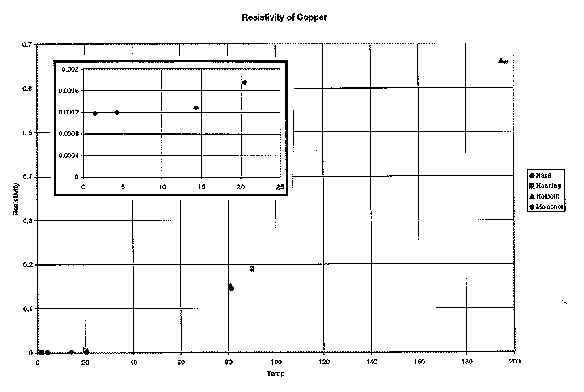
The results above have been compiled from existing literature (A Compendium of The Properties of Materials at Low Temperature.) There are two things worth noting here. 1) The shape of the results are similar down to 80K compared to the demo, but 2) below 60 K, the resistance curves upward to approach absolute zero (O Kelvin) at a finite value.
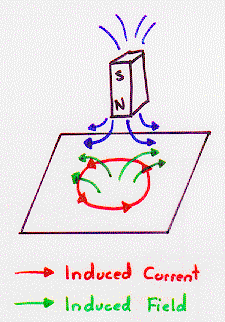
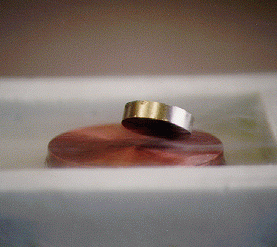
This sequence of events occurs when a magnet is dropped onto a sheet of copper as shown in the diagram on the left. In the picture above center, a strong magnet has been dropped onto a cold puck of Copper. The induced currents that run on the surface of the Copper cause the magnet to hesitate as it falls. It was actually very easy to catch this photo because the magnet takes over 2 seconds to completely fall which is much longer than when the copper is at room temperature. The magnet hesitates longer here because the lower resistance allows the induced currents to last longer. But because there is still at least some resistance the magnet always makes it to the copper surface eventually as the currents decay away.
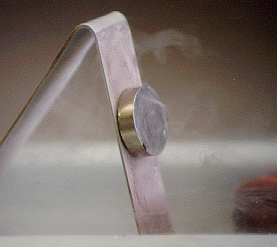
The same process of induction is responsible for an effect often refered to as eddy current braking. The Copper slide that the magnet is sitting on is immersed in Liquid Nitrogen to lower its resistance. As the magnet is released down the slide, the movement causes induced currents and fields that oppose the continued motion of the magnet down the slide. As a result, it takes around 4 seconds for the magnet to fall the 10 cm distance!
